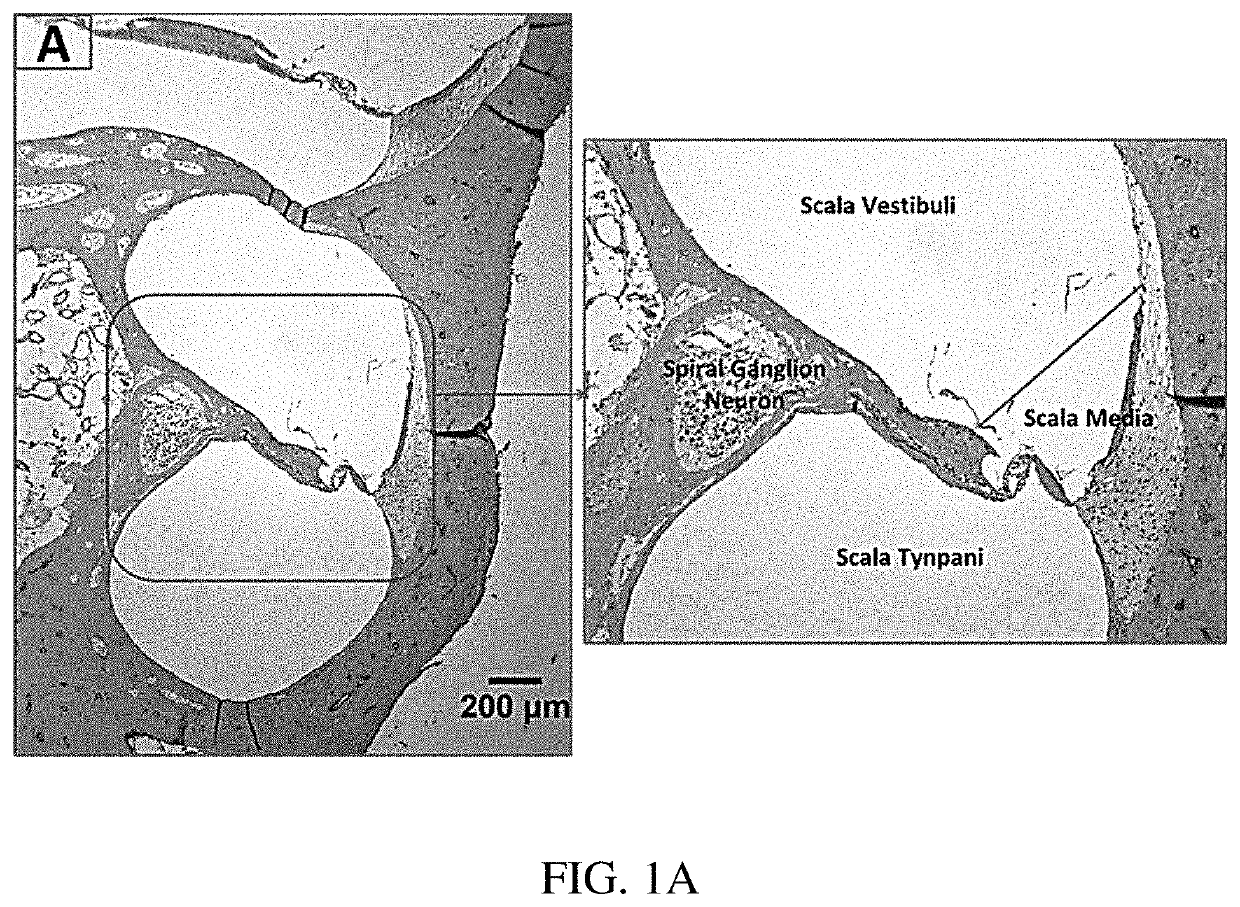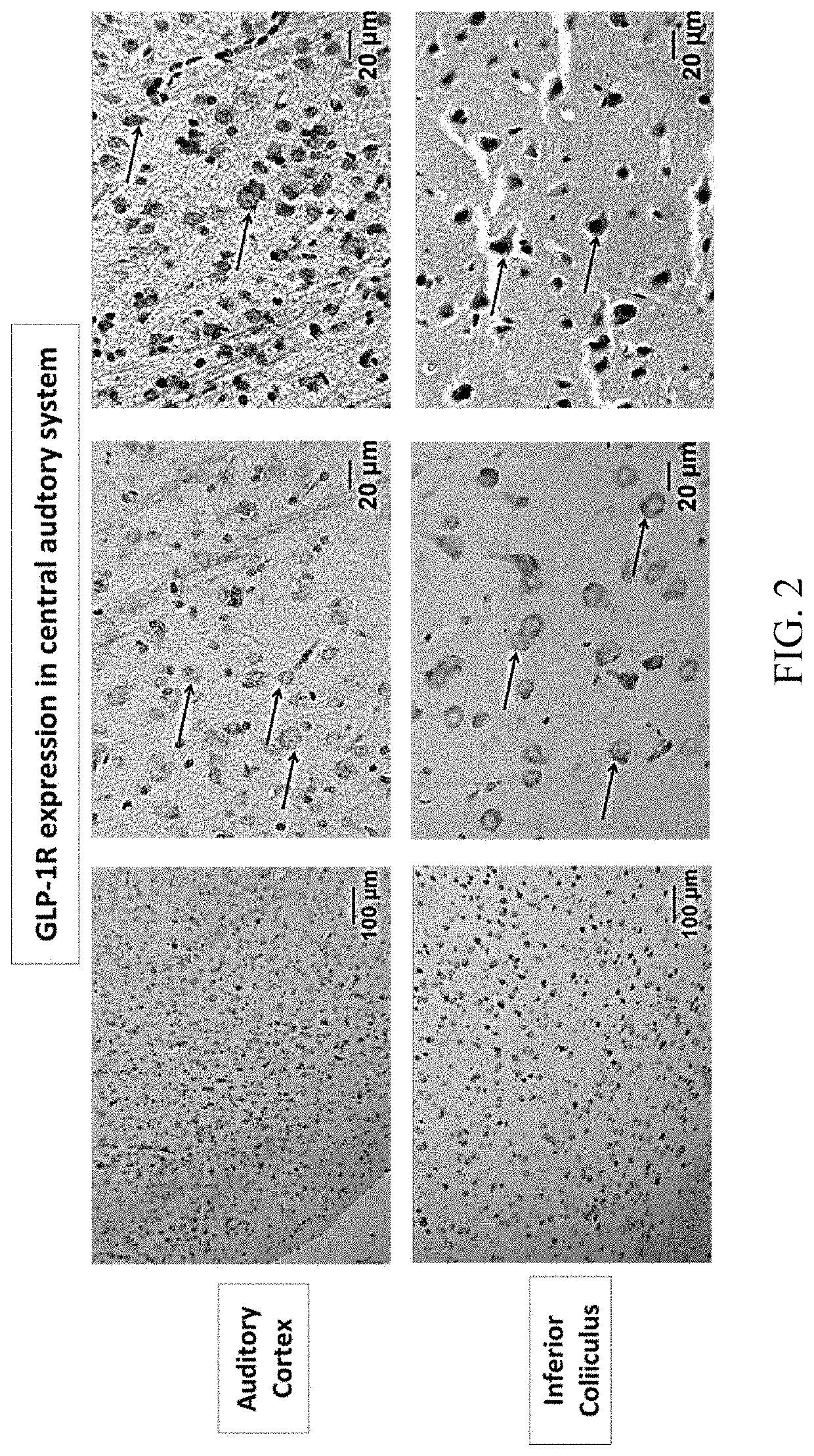Uses of glucagon-like peptide-1 receptor agonists for treating trauma-induced hearing loss
a technology of glucagon-like peptides and receptors, which is applied in the direction of peptide/protein ingredients, drug compositions, sense disorders, etc., can solve the problems of permanent hearing damage in service members, peripheral (middle ear and cochlea) and central damage (brainstem and brain), and achieve mild traumatic brain injury. mild
- Summary
- Abstract
- Description
- Claims
- Application Information
AI Technical Summary
Benefits of technology
Problems solved by technology
Method used
Image
Examples
examples
[0053]Returning now to particular but non-limiting embodiments of the present disclosure, therapeutic functions of GLP-1 agonists in treating acute and progressive hearing damage in both peripheral and central auditory systems in chinchillas exposed to blast exposure treatments were investigated.
[0054]Materials and Methods
[0055]Healthy young adult chinchillas were used in this study and divided into three groups (7 animals for each): Experimental Groups 1 and 2 and Control Group. GLP-1R agonist (Liraglutide) was delivered to animals with subcutaneous injection at 48 hours before (named as “pre-treatment”) or 2 hours after the blast exposure (named as “post-treatment”) within 7 consecutive days in Exp. Groups 1 and 2, respectively. Each animal was exposed to 3 consecutive blast exposures at the BOP level causing mTBI (15-20 psi or 103-138 kPa) on Day 1 after pre-blast function measurements, including the wideband tympanometry (WBT) for middle ear function, auditory brainstem response...
PUM
| Property | Measurement | Unit |
|---|---|---|
| frequency | aaaaa | aaaaa |
| frequencies | aaaaa | aaaaa |
| sound pressure level | aaaaa | aaaaa |
Abstract
Description
Claims
Application Information
 Login to View More
Login to View More - R&D
- Intellectual Property
- Life Sciences
- Materials
- Tech Scout
- Unparalleled Data Quality
- Higher Quality Content
- 60% Fewer Hallucinations
Browse by: Latest US Patents, China's latest patents, Technical Efficacy Thesaurus, Application Domain, Technology Topic, Popular Technical Reports.
© 2025 PatSnap. All rights reserved.Legal|Privacy policy|Modern Slavery Act Transparency Statement|Sitemap|About US| Contact US: help@patsnap.com



